A Day in Modern Industry
High school students taking over Johnson & Johnson for a day? A seventeen-year old Chairman and CEO sitting at General Robert Wood Johnson’s desk? What on earth was going on at Johnson & Johnson in the late 1940s and the 1950s? It was all part of a program called A Day in Modern Industry…an early cousin to today’s Take Our Daughters and Sons to Work events.
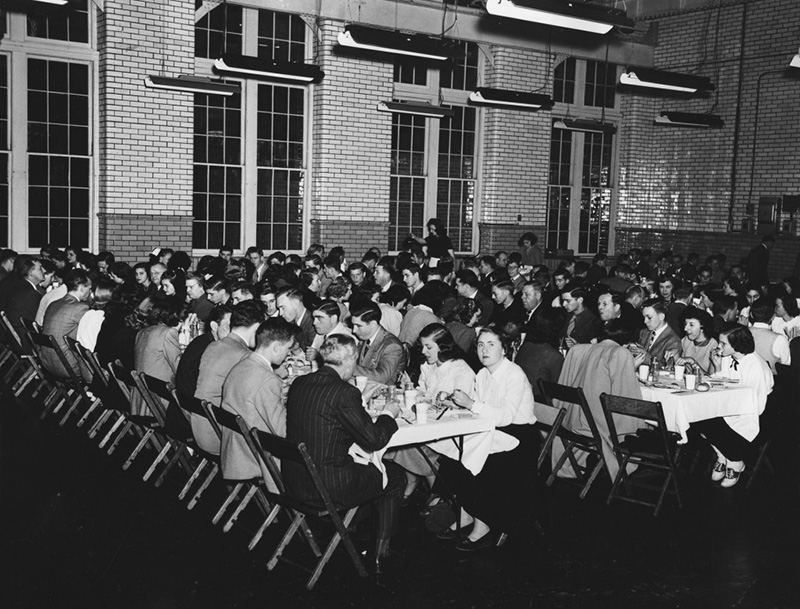
Johnson & Johnson started the A Day in Modern Industry program in 1947 and, like the invention of BAND-AID® Brand Adhesive Bandages, it was an employee idea. The idea behind the program – the brainchild of a very creative employee -- was to show high school seniors the connection between education and work, show them the different opportunities and careers available in business, and give them an idea of the kinds of education needed to pursue those careers. It also gave students a chance to get a behind-the-scenes look at Johnson & Johnson – through spending a day here.
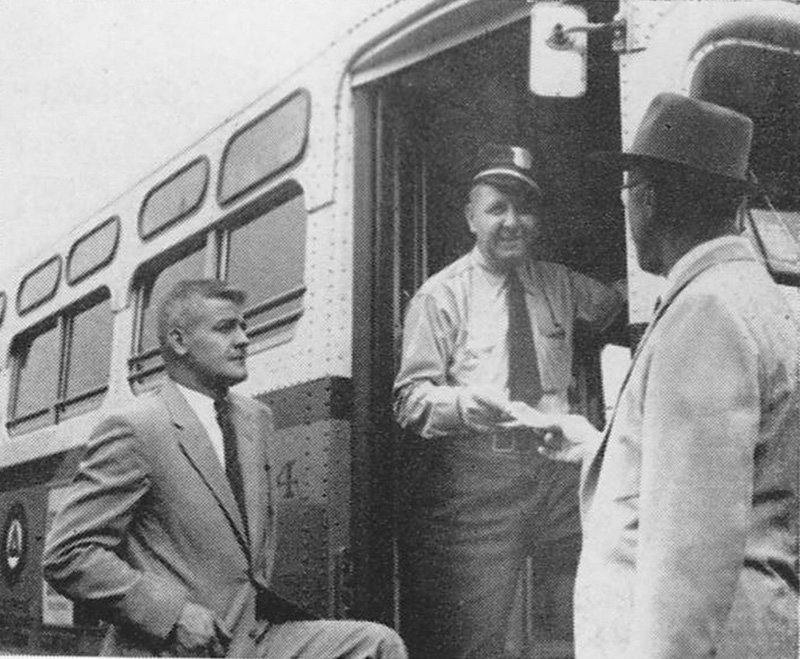
Johnson & Johnson worked with local high school guidance departments to make the program happen. Students interested in participating had to fill out an application form that stated their qualifications, areas of study and job preference. They were then matched with a Johnson & Johnson employee by their school’s guidance counselors and the Company’s Personnel department (the name of our Human Resources department in the 1940s).
Each student shadowed his or her Johnson & Johnson counterpart for the day. The student learned about the employee’s responsibilities and participated in their “job for a day.” Students attending the Day in Modern Industry programs worked in every area of the Company.
They took over the Law Department for a day.
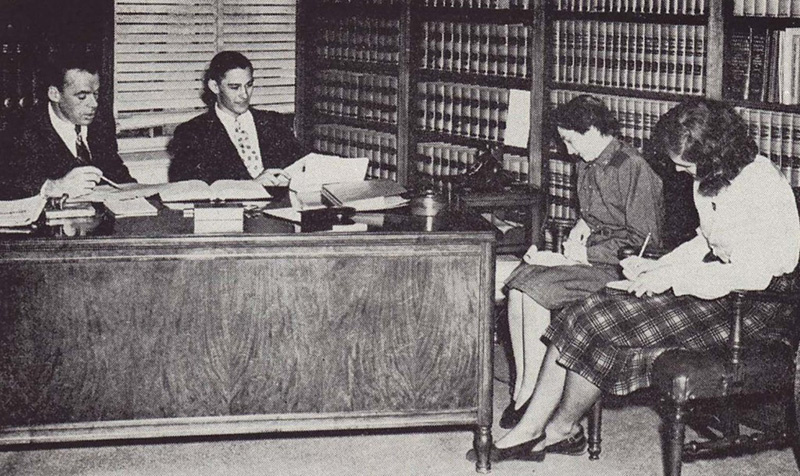
They worked in the lab.
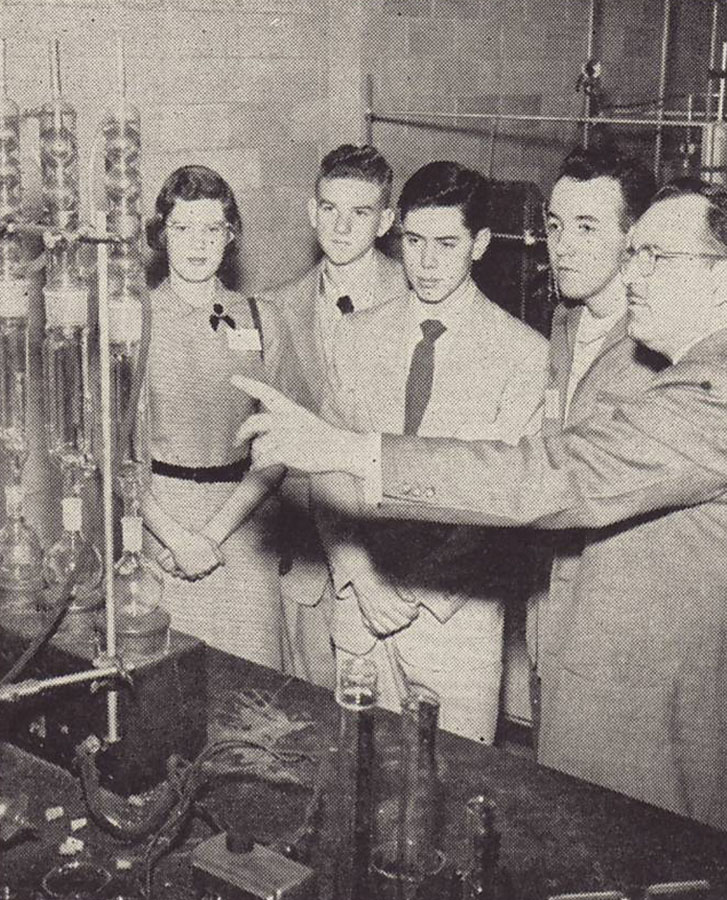
They worked in manufacturing.
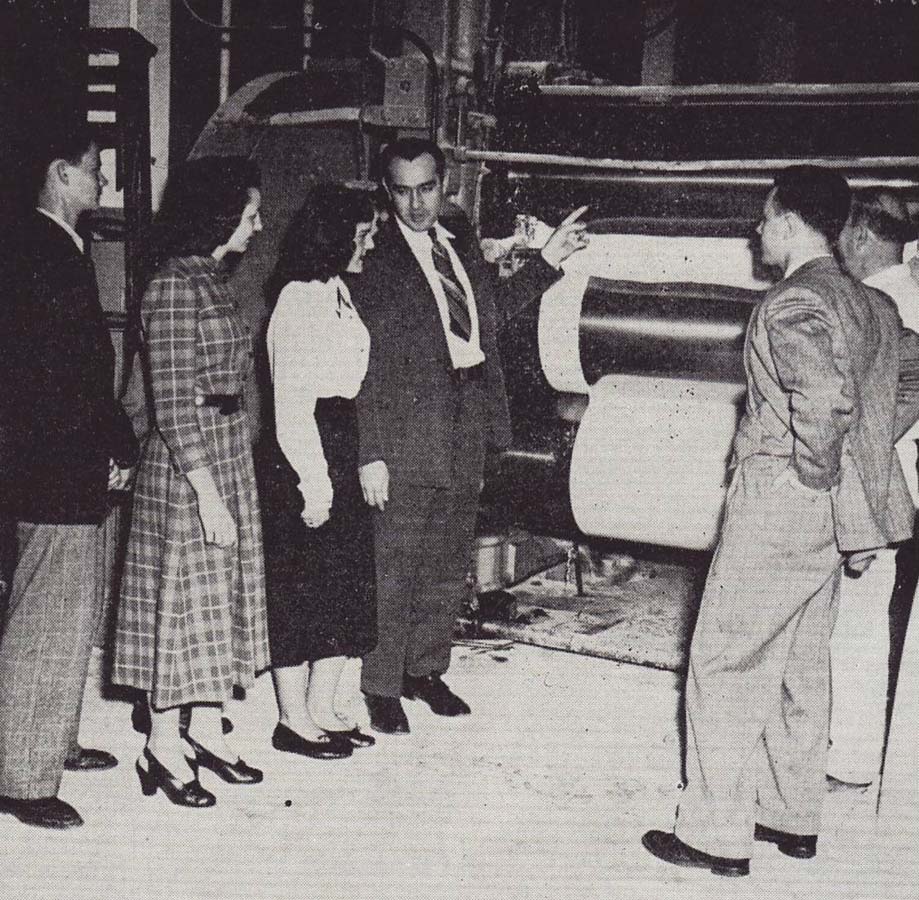
They worked in accounting.
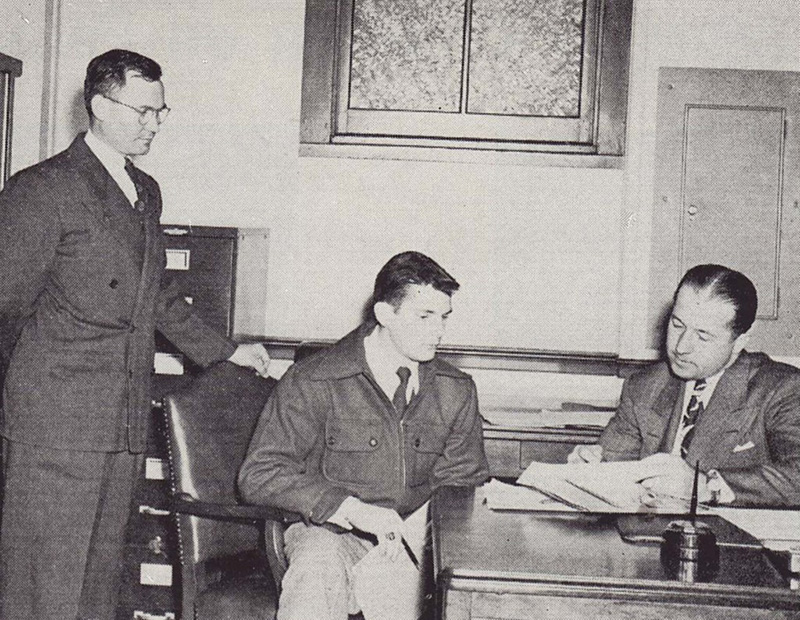
Some of them worked in shipping.
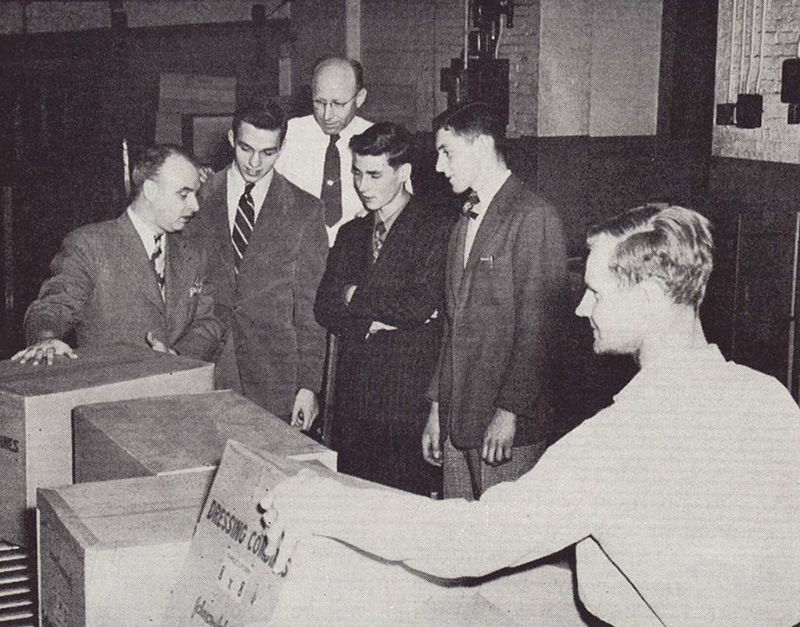
And one student got to be Chairman and CEO for a day.
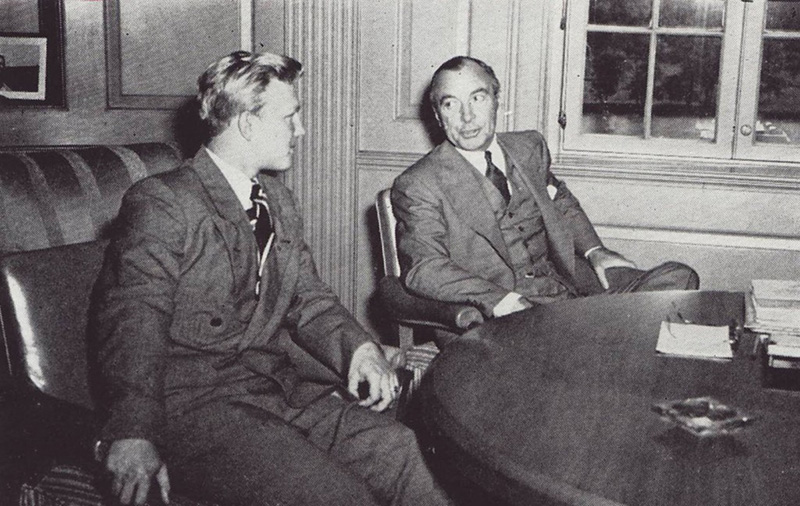
The 300 or so students arrived at Johnson & Johnson on buses at 9:00 a.m. At 9:30 they heard a brief welcoming address, and were then conducted to their work areas to meet their Johnson & Johnson counterparts. After a morning of learning about their chosen careers, they regrouped to have lunch in the Power House (which had a big open area to set up tables) and they returned to work until later in the afternoon, when they gathered for a talk by Chairman and CEO General Robert Wood Johnson.
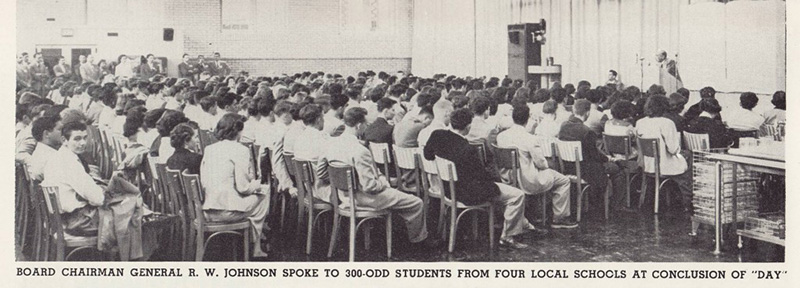
The students were encouraged to write about their experiences at Johnson & Johnson. One student, M.J., was assigned to shadow the editor of The Bulletin, the Company’s employee newsletter. Here’s what she said:
“Today I am going to Johnson & Johnson to participate in the fourth annual ‘Day in Modern Industry.’… “…I join a rather large group that is assembling in the southwest corner [of the cafeteria]. Here I meet Mr. R-----, who introduces me to Don M----- and Dan S---- of Station WCTC, who are going to interview the students and employees, from vice presidents right on down the line…We finally come to the Communications department, where the Bulletin office is located. Charles R---- and I discuss the different problems concerning the editing of a plant magazine, while our roving reporter friends listen in…” [Johnson & Johnson Bulletin, May, 1951 “My Visit to Johnson & Johnson,” p. 13]
M.J. also visited a number of other areas during her Day in Modern Industry.
“Our next stop is Ethicon Suture Laboratories, Inc., a beautiful building that looks more like a hotel than a factory – which proves General Johnson’s statement that ‘factories can be beautiful.’ We then arrive at the Research Center, which has just been completed. After inspecting a few of the smaller labs, we proceed to the offices of Dr. William L---.”
“Back in the cafeteria, we listed to General Johnson, as he tells us that, whether we realize it or not, the future of American Business is in our hands.” [Johnson & Johnson Bulletin, May, 1951 “My Visit to Johnson & Johnson,” p. 13]
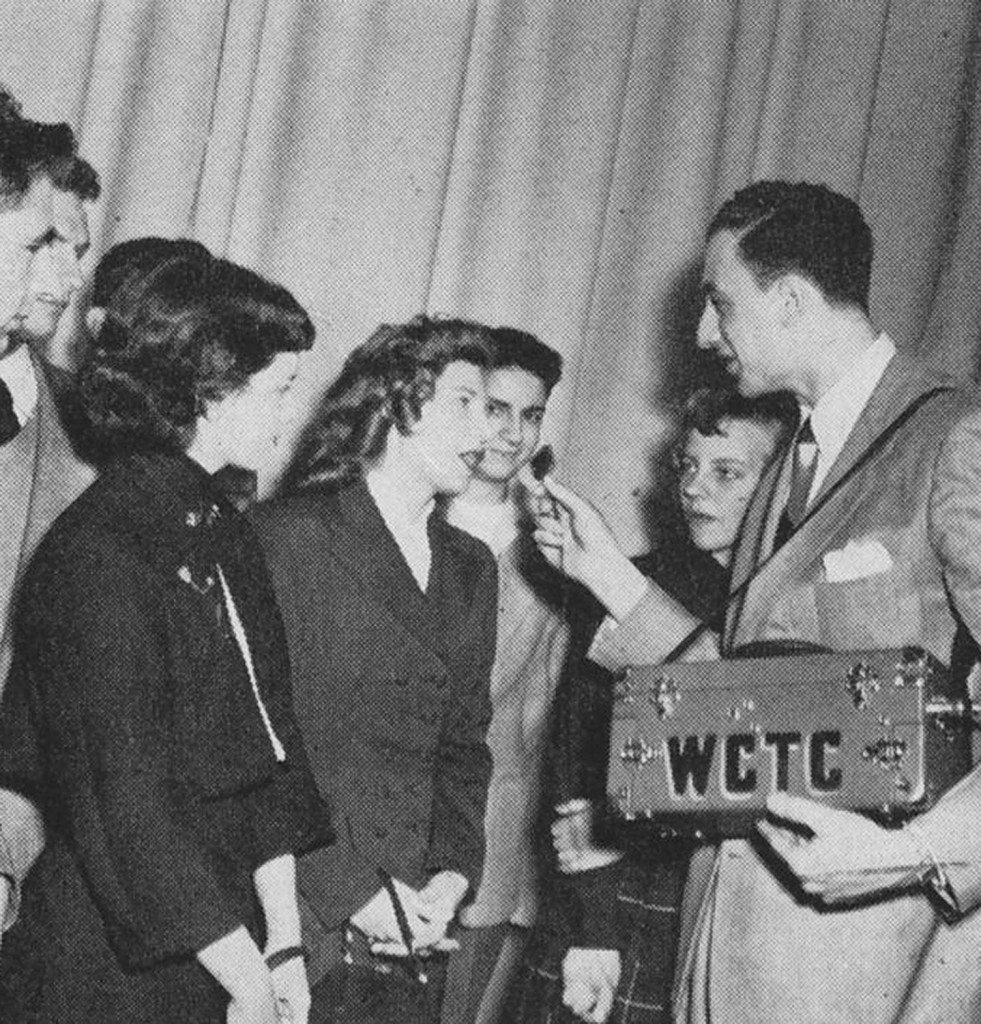
A Day in Modern Industry was widely covered in the press, and it became a national model for other companies. Johnson & Johnson even produced a how-to manual for other companies, should they wish to organize similar events. The program was written about in The New York Times and other newspapers across the U.S., in Nations Business and Forbes magazines, and on radio and television.
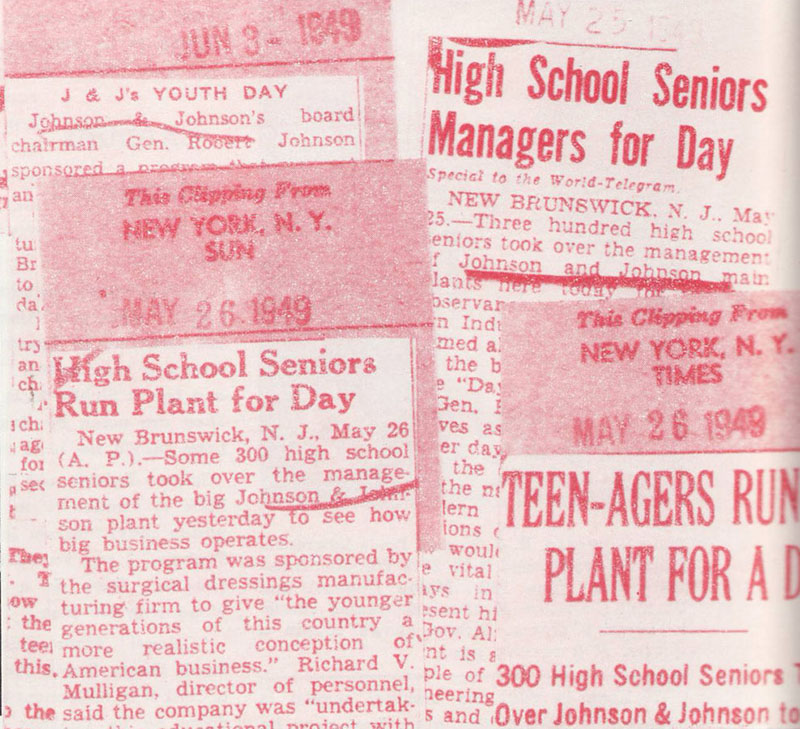
Why did we do the A Day in Modern Industry program? Johnson & Johnson has long recognized that businesses are citizens of the communities in which they’re located, and their fellow citizens are patients, consumers, neighbors and perhaps future employees. Students in the surrounding communities got to see what it was like to choose a career in business and what a workday would be like at Johnson & Johnson. Some of the high school students participating in the program went on to join Johnson & Johnson after they finished their education.
But the A Day in Modern Industry program also had another benefit. Just like social media would do decades later, the A Day in Modern Industry program in the 1940s and 1950s showed students that a business wasn’t just a set of buildings, it was made up of people. General Robert Wood Johnson, who defined business by saying “business is people,” felt that the program was “ ‘a chance to break down the wall.’ ” [Johnson & Johnson Bulletin, “A First Look at Tomorrow, J&J’s Day in Modern Industry Program Gives 200 Local High School Students A Revealing Glimpse of Their Future,” December 1954, p. 5] A Day in Modern Industry was a great opportunity for both sets of people – Johnson & Johnson employees and high school students – to get to know each other.

62 years J & J has played the role of psychologists in guiding today's youth in career directions.
I would read stories of young people who attended these programs and have decided after a visit to modern industry. What was their future? What type of professionals have become? And finally, how the program helped in career choices.
Luiz,
Some of the articles on that program that we have in our archives said that some high school students who were interested in engineering were able to understand the kinds of things an engineer actually did at work, and it made them more determined to become engineers. The program helped many students' career choices because it gave them a first-hand look at what many potential careers would be like.
Margaret
Thank you for this look at an innovative J&J initiative that provided career education for the community's youth. I wonder about the impact it may have had on young women's impression of their options in the workforce at that time, as the messages they were probably receiving in school were geared toward certain, limited professions; and, judging by the photos, all the J&J professionals were men. Nevertheless, I imagine it opened their eyes to the possibilities available to them, and hopefully to the support J&J clearly had for them as evidenced by this program. Thank you, Margaret!
Thank you for reviewing this J&J Work Study initiative for community youth.
I participated in one of these High School Work study program with J&J in 1974 (Band-Aid division in Chicago). It eventually, afforded me the opportunity to rotate through Accounting, Manufacturing, QA, Engineering, HR and Distribution (Ethicon). I had the opportunity to spend about 4 months in each area reporting directly to the VP of Manufacturing.
This had a tremendous impact on my future carreer. Eventually becoming a Manufacturing Manager and subsequently transferring into Sales with J&J.
I truly understand the link of manufacturing a quality product and meeting the Sales demands identified by Marketing.
Many of these opporutnies have been dismantled . However, this was one of the most significant opportunities in my life. It truly shaped my knowledge on Business Acumen and the opportunity of working for a Fortune 500.
What a forward thinking company Johnson & Johnson was and remains. Our modern Bridge to Employment Program still serves a similar function but also includes academic support and long term employee mentoring of local students.
One question; was the program open to students of color? They are notably absent from the photos, but that could be the photographer's choice.
In reply to by Conrad Person
Conrad, the program was open to students of color. It was open to any interested student in the local high schools who participated. I think the absence of students of color may, as you said, probably have been due to the photographer.
Margaret
I think this is a great program from a forward thinking company/ My two grandchildren really enjoyed and another hopes to go when she is older.
I am also an avid lover of history and am awed by the General's Great and Forward Thinking initiatives.